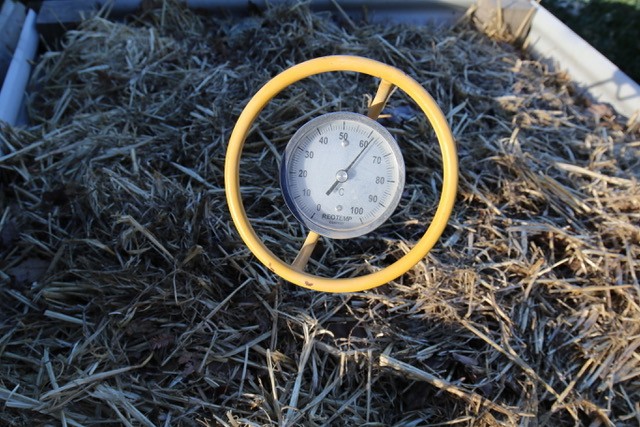A mistake we humans often make is to think that if something is good, more of it will be better.
We can make this mistake with the temperature of hot compost. Hot compost has so many benefits, but only up to a certain temperature. If our composts go past this ‘sweet spot’ temperature, we start to encounter problems.
Hot compost is usually defined as compost that gets up to at least 55o Celsius for at least three days. Longer than three days is fine and up to about 65oC is okay.
When the temperature of our compost creeps up to and above 70oC, the microbial activity (that is creating the heat in the pile) gets so intense that the whole pile can no longer exhale carbon dioxide and exchange it for the fresh oxygen our teeming beneficial composting microbes need to live.
When these conditions occur, a new class of heat-loving ‘anaerobic’ (not breathing oxygen) bacteria start to take over. Rather than releasing carbon dioxide, these bacteria release acids and alcohol.
Our compost will start to develop bad smells and the excess heat dries the pile further, making the situation even worse. This is the beginning of the microbial sequence that can sometimes cause mulch piles or hay stacks to ‘spontaneously combust’, where they actually catch on fire!
This is extremely unlikely to happen in a compost pile, because composts are almost always too dense and too wet to actually catch on fire, but it is good to understand the factors that can lead to this, as even the early stages of the process are not good for our compost.
So, what is causing this overheating? In the simplest terms, composts get too hot (68oC and up) as a result of not being dense enough.
We spend a lot of time in the Compost Conversation encouraging composters to avoid making heavy, ‘food scrap only’ composts in the backyard, and to add more carbon, texture and aeration. But even with this, we can go too far in the other direction.
If our compost recipe is too high in those carbon-rich, texturally aerating materials like coarse straw, wood chips and particularly coarse woody material, our composts can end up very light and full of air spaces and gaps. This leads to two things: a pile that is extremely well insulated (think all those insulating air gaps like a jumper or an insulation batt) and a compost with a very low water holding capacity (those woody things just don’t hold the moisture of heavier ingredients).
This kind of pile is prone to overheating, particularly in summer when the drying conditions of sun and wind can exacerbate the problem.
Next week we will look at what we can do to rescue an over-heating pile, then how we can adjust our recipe to make over-heating less likely to be a problem in the future.
— Joel Meadows works with *Yes In My Back Yard, (YIMBY), a community-scale composting initiative in Castlemaine and surrounds. Send questions or comments to hello@yimbycompost.com, or to book in for a compost workshop!








